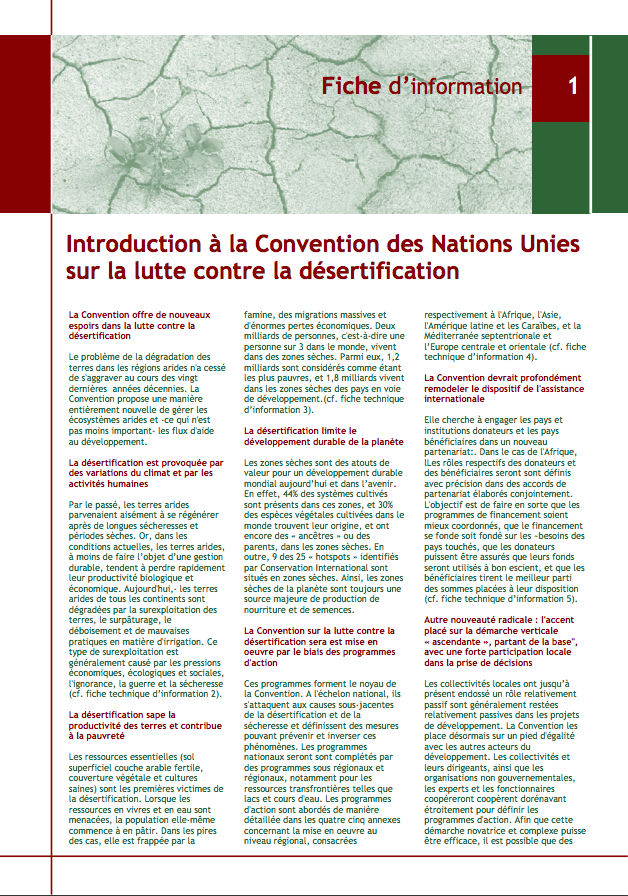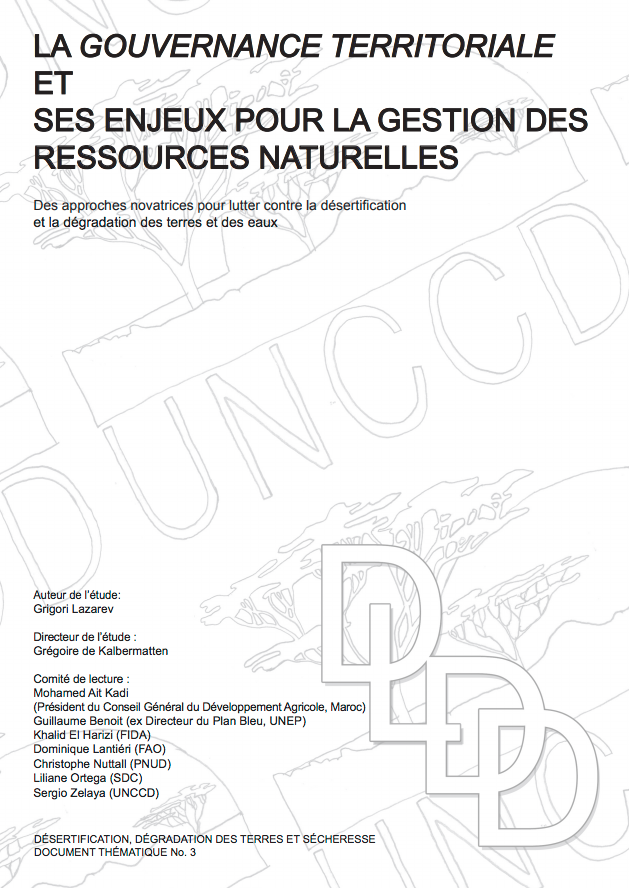The 10-year strategic plan and framework to enhance the implementation of the Convention (2008–2018) (Arabic)
THE VISION to forge a global partnership to reverse and prevent desertification/land degradation and to mitigate the effects of drought in affected areas in order to support poverty reduction and environmental sustainability












